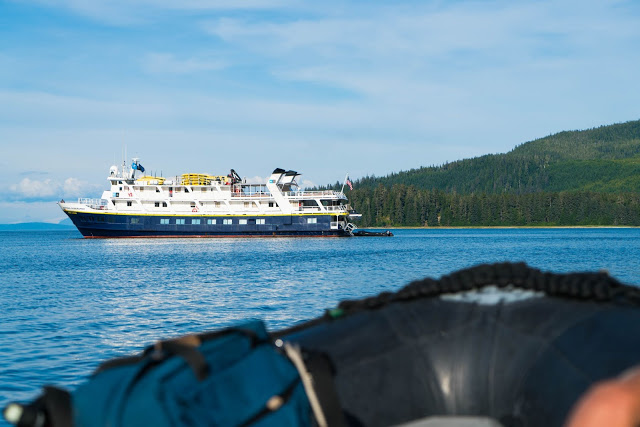
Our adventure started off with a 7-day voyage through Southeast Alaska, with Lindblad National Geographic on the Sea Lion, and I can’t say enough good things about it. The ultimate travel luxury? Simply showing up, knowing that everything is thoughtfully planned and every detail taken care of to ensure a marvelous time.
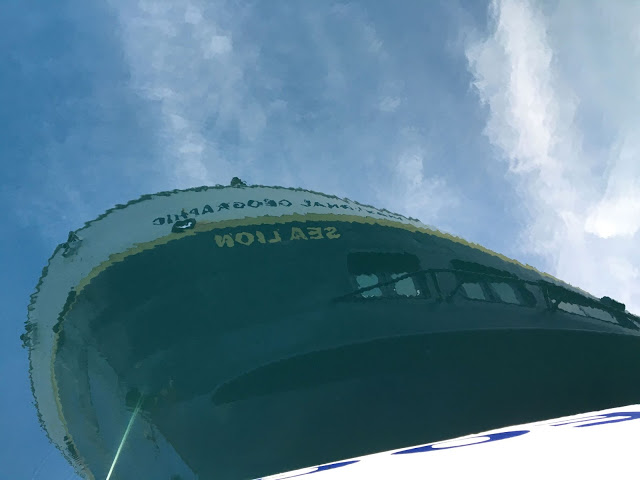
The ship
The Sea Lion is small – just four decks (one of which is crew-only). The top deck hosts the bridge, a few cabins, and a small sun deck with deck furniture and exercise equipment. The main deck has most of the cabins, plus access to the bow, where people tended to congregate while we were under way to search the shore for animals or just watch the scenery glide by. The deck below contains a few more cabins, the dining room at the front, and the lounge at rear.
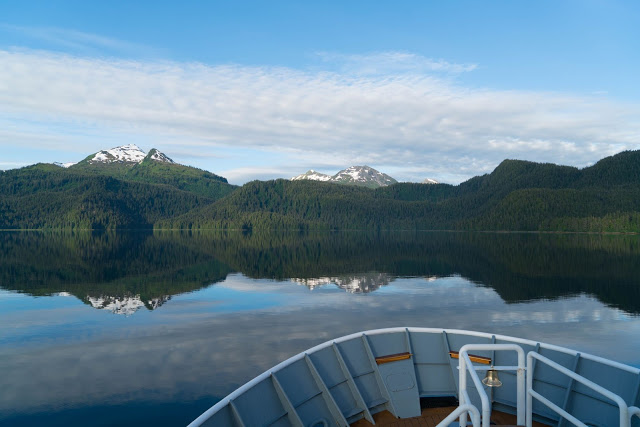
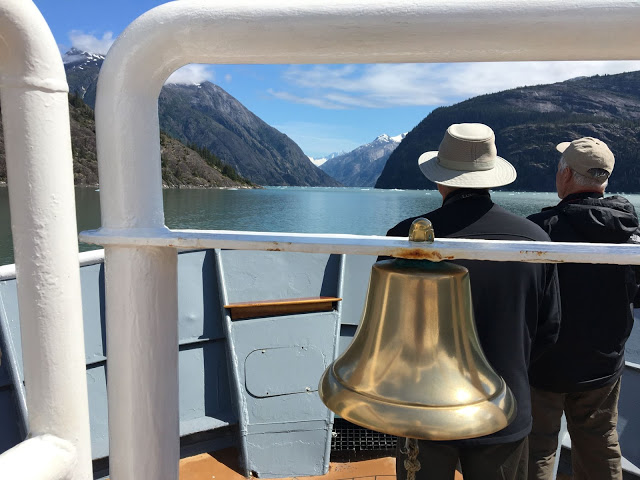
The cabin
Upon first stepping in, it was startlingly small. But it’s cleverly designed, so that once we were unpacked and settled, everything had a place and we were quite comfortable. There’s one large, deep drawer under each bunk, where I put most of my clothes (leaving some for our later Denali trip in my suitcase). Suitcases and other bags have plenty of space under the bunk as well.
There’s a bedside table with a drawer (perfect for chargers and camera stuff) and a sort of catch-all shelf at the bottom (where I stored gloves, sunglasses, chocolate bars, and my ipad). We mostly used the compact closet to store our rubber boots out of the way, as well as our life jackets. There are two kinds – regular ones to wear on Zodiac outings, and giant ones in case you need to abandon ship.
The back of the cabin door had plenty of hooks, so we kept our jackets and rain pants there. Extra hooks around the cabin held towels, hats, and extra clothes up out of the way.
I have to note that the bed was extremely comfy, especially when combined with the soothing, gentle rocking of the ship under way.
Be aware that the bathroom is tiny – imagine an airplane lavatory, with the sink removed and a shower head added. There’s a shower curtain that you pull in front of the toilet (important to avoid soaking your toilet paper!) so the showering space is compact. But with a handheld shower head, it’s quite functional. The vanity/sink is in the cabin, so there’s more space and you don’t need to worry about all your toiletries getting wet!
Daily life
Every day we had a 7am wakeup over the PA (each cabin has a speaker in the ceiling, which you can turn off – but it’s very useful to hear all the announcements!). I was usually up earlier and out on the bow with a group of others in the same habit – some with binoculars, some with cameras, others just with a cup of coffee. It was nice to develop camaraderie with them and hang out each morning. At 730am w e all headed down to breakfast, where we were briefed on the activities to come (as well as weather and recommended gear). Morning activities varied – sometimes hikes or kayaking, other times watching scenery and wildlife from the bow.
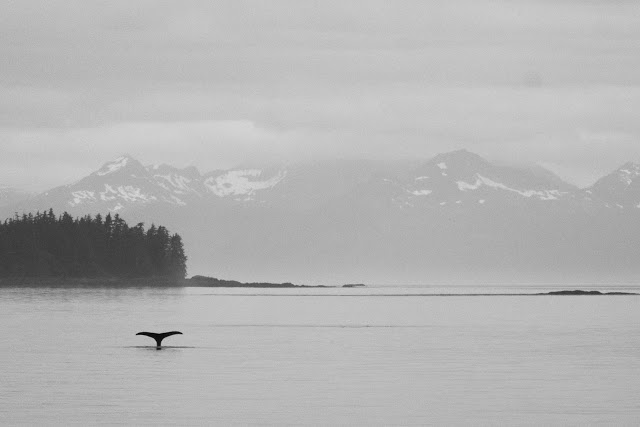
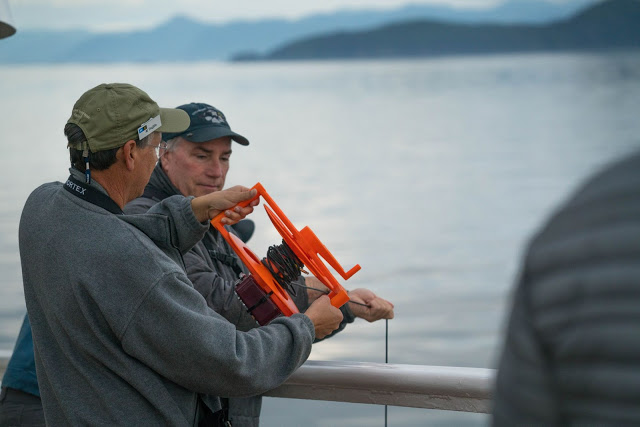
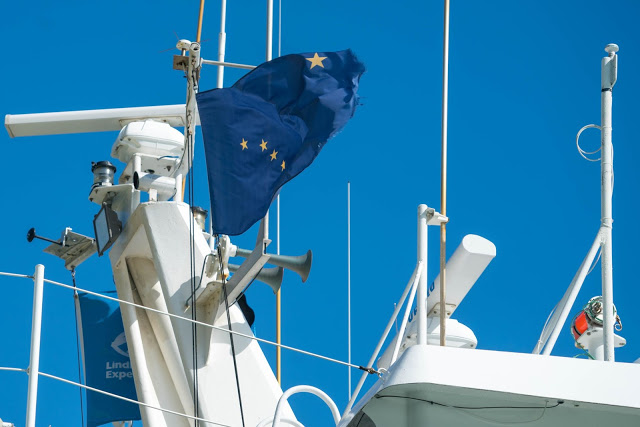
Lunch was served around 1230pm, then we segued into afternoon activities, including zodiac excursions or lectures. Usually there was some down time as well, during which I returned to the bow or edited photos.
At 6pm, we had happy hour in the lounge – always fun to relax and chat about the day – and at 630pm we had “recap”, where our expedition team presented short talks about glacier geology, the wildlife we were seeing, or the undersea life beneath us (complete with video taken on dives under the ship!). The expedition leader also gave us a rundown of the next day’s itinerary and set out sign up sheets for activities (various types of hikes, kayaking, etc). At 7pm we headed in for dinner, and then often there was an after dinner talk. Others returned to the bow to enjoy more scenery before sunset around 10pm (I usually couldn’t keep my eyes open and fell asleep before sunset!).
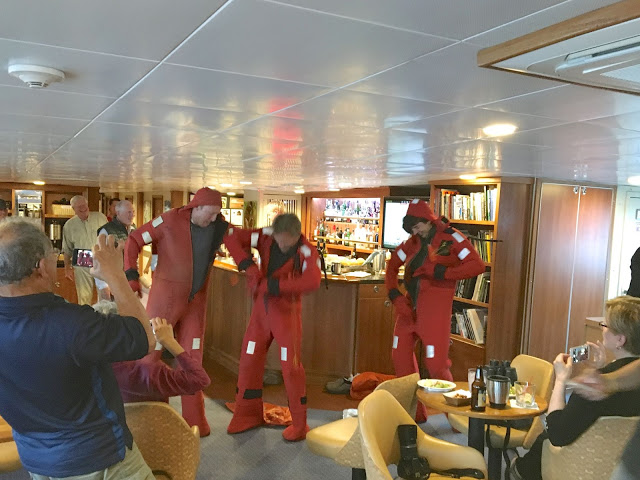
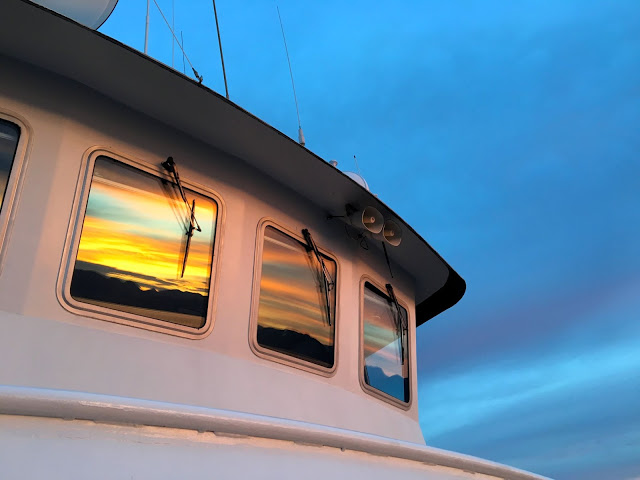
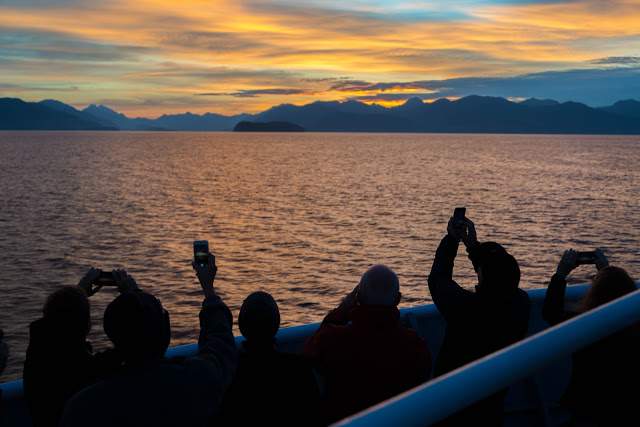
Packing
Before the trip, you’ll get info emphasizing how important knee-high rubber boots are. Trust it. They are a must have. The best approach is to rent them – they’re waiting in your cabin so you don’t have to pack them, and you don’t have to feel bad when they get covered in mud (which they will). We brought insoles to insert for extra comfort but the boots were in good condition and I don’t think it was critical.
Other than boots, the key item to have is a rain jacket and waterproof pants. Pretty much everyone seemed to have Marmot precip pants (I did too), which pull over your regular pants and keep you dry as you hike through tall, damp grass or kayak. They also keep you warm when hanging out on the bow of the ship. Pro tip – don’t tuck your rain pants into your boots. You want them out (even though they get wet/muddy at the bottoms) because then the water runs down your leg onto the ground instead of down your leg and into your boot!
I also got a lot of use out of my lightweight down jacket and vest, wearing one or the other pretty much all the time. I didn’t bother bringing a fleece (too bulky) and didn’t miss it. Waterproof kayak gloves were useful, plus fleece gloves and a hat; I never did get cold enough to need a scarf. Other than that, stick with synthetic fabrics that are light/ non-bulky/ quick drying, and think layers.
A truly memorable adventure, and I’ll share more of the details soon!
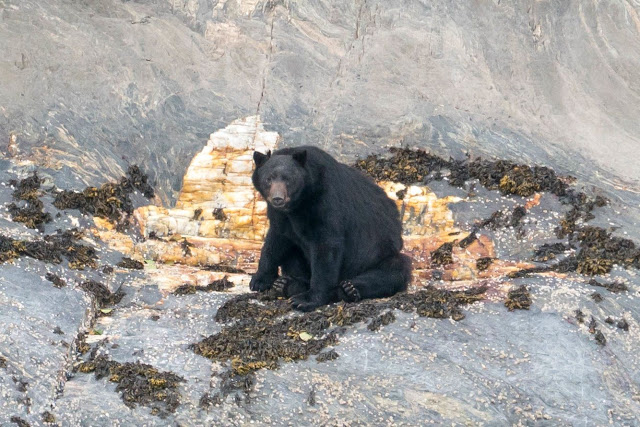
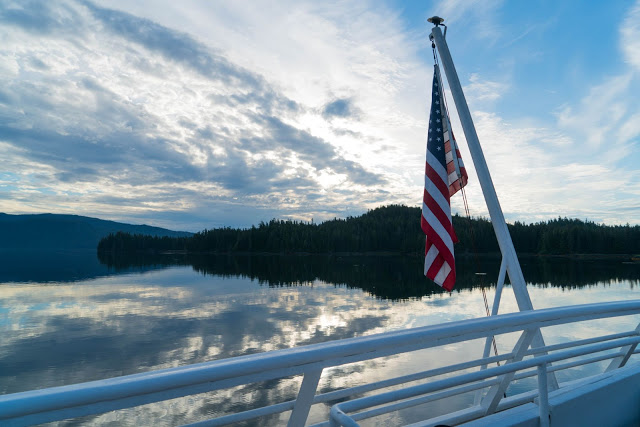
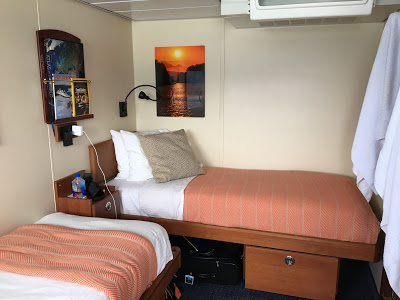
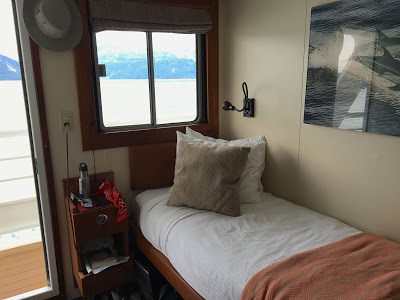
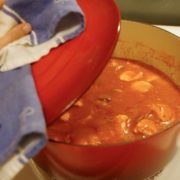 Chicken cacciatore
Chicken cacciatore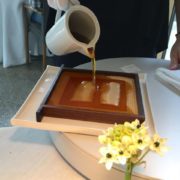 Steirereck, Vienna
Steirereck, Vienna Penne alla Vodka
Penne alla Vodka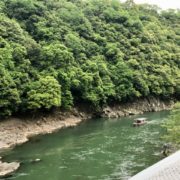 Hoshinoya Kyoto
Hoshinoya Kyoto